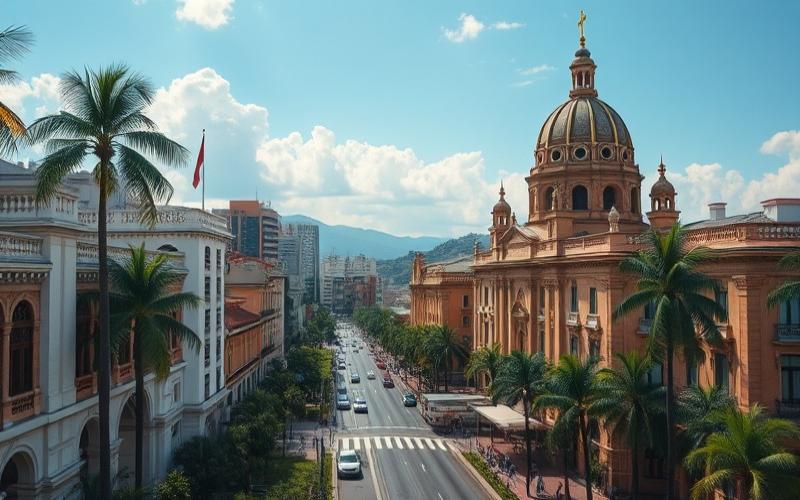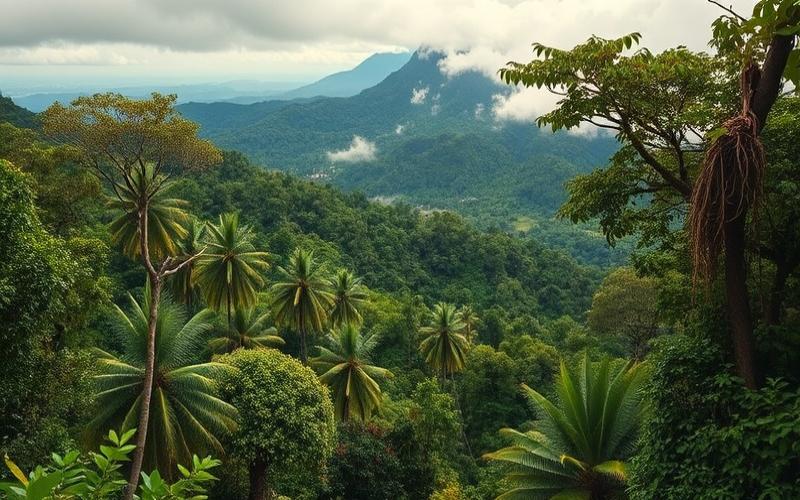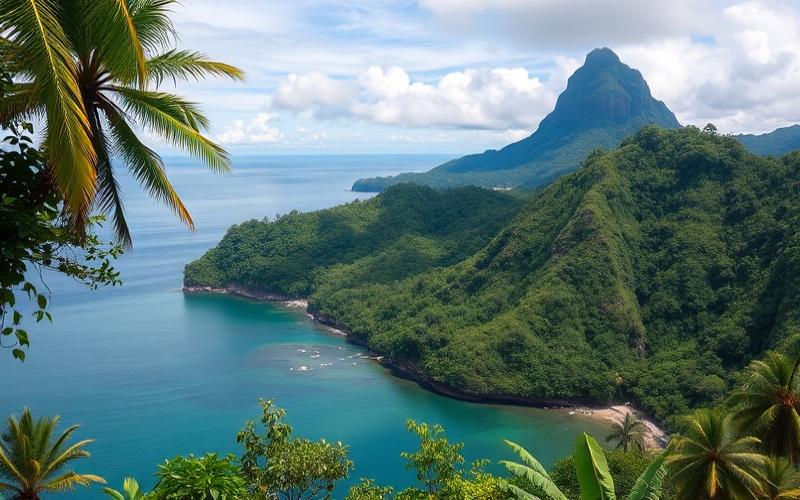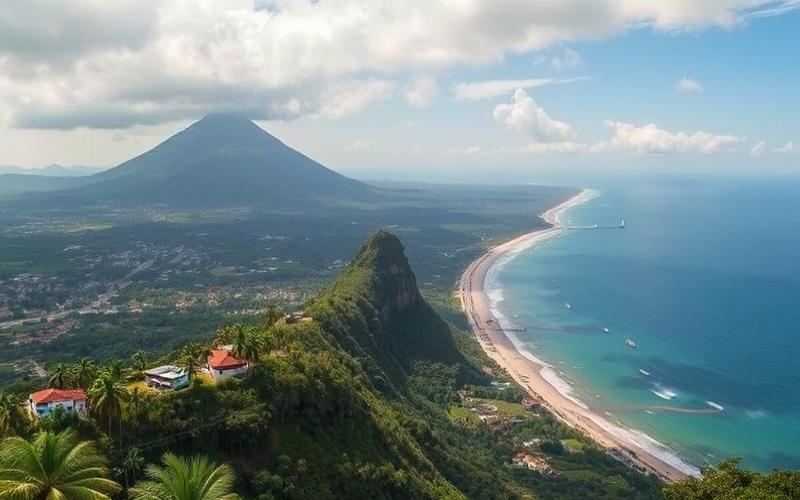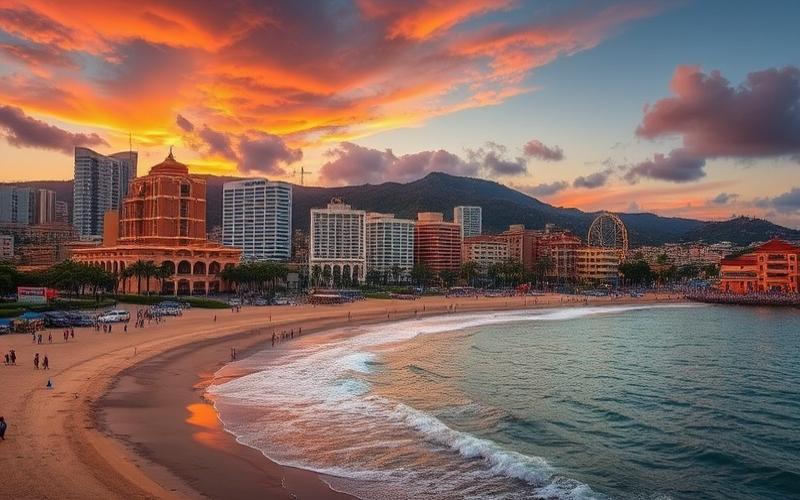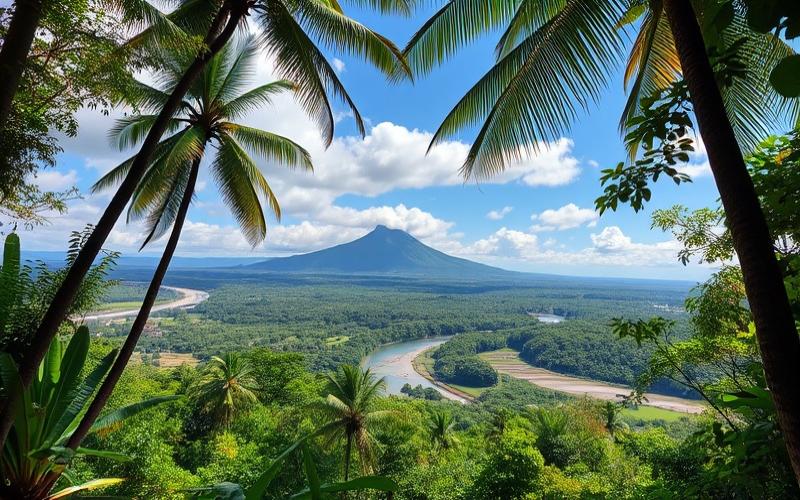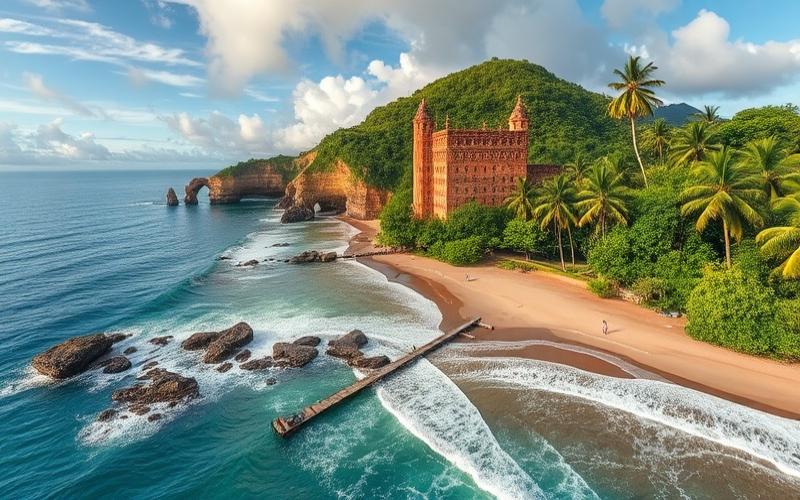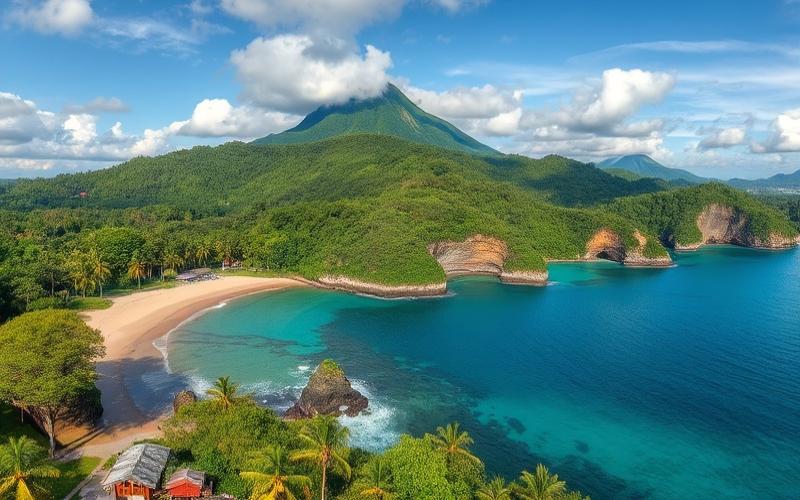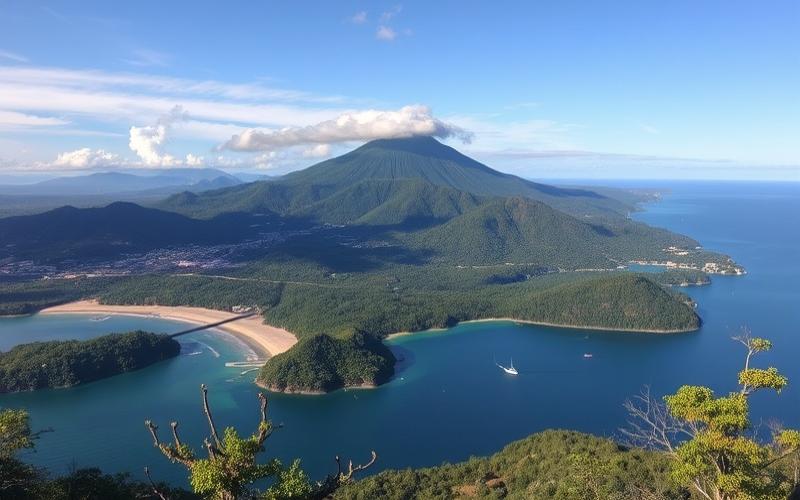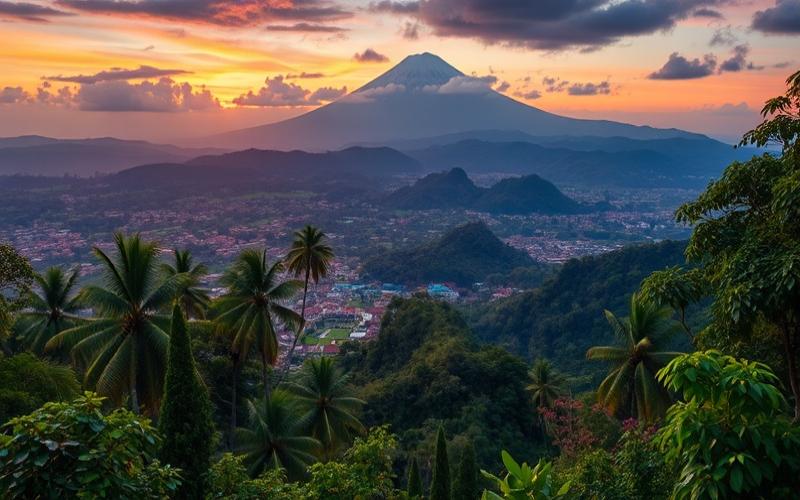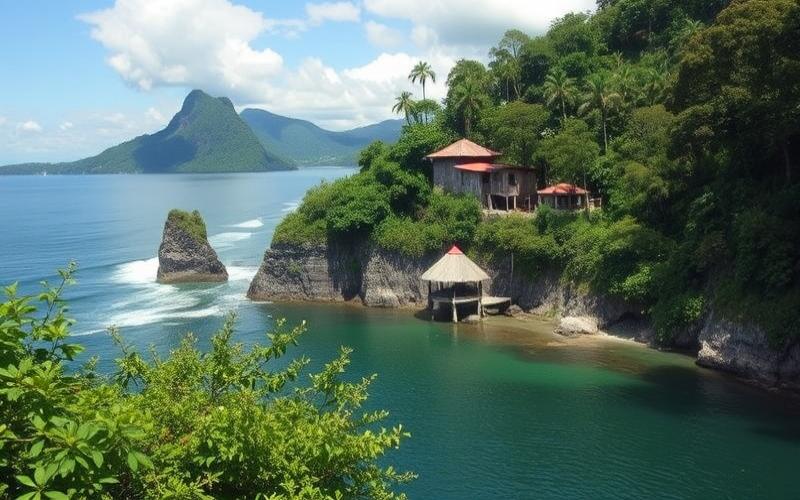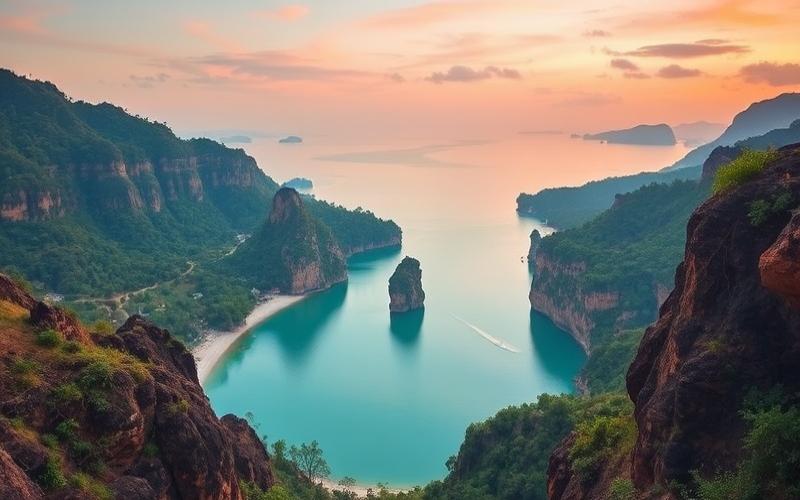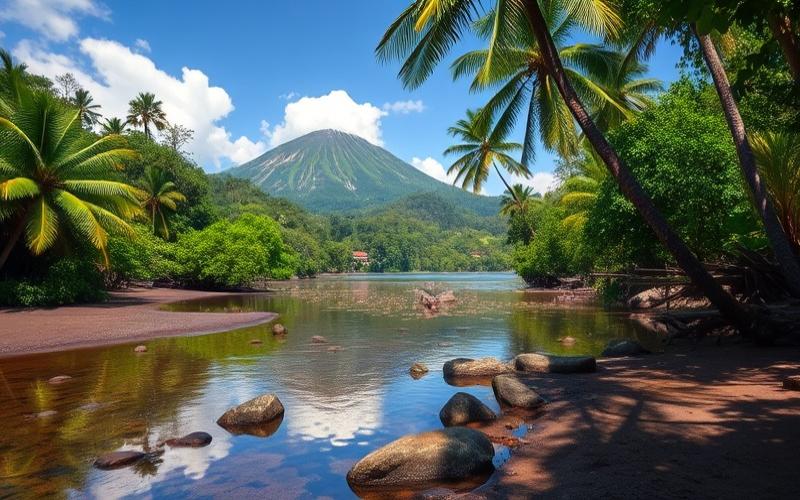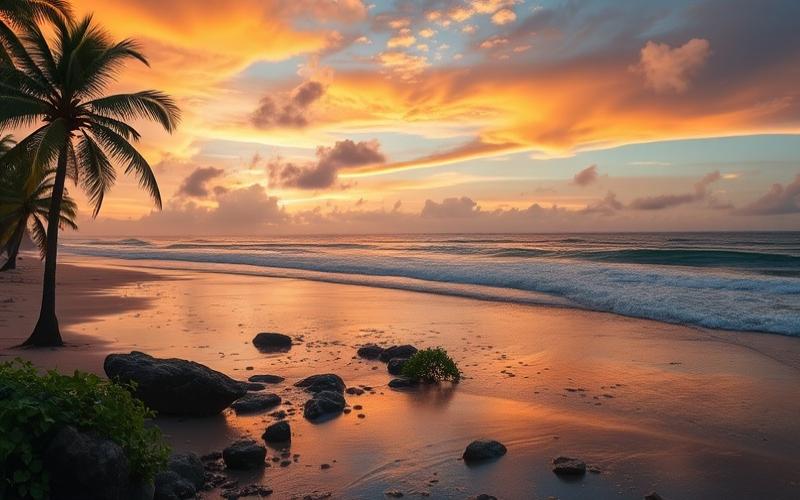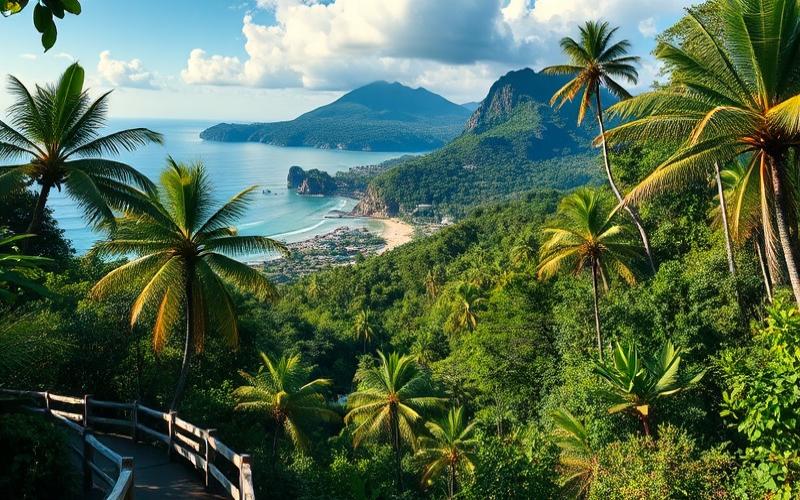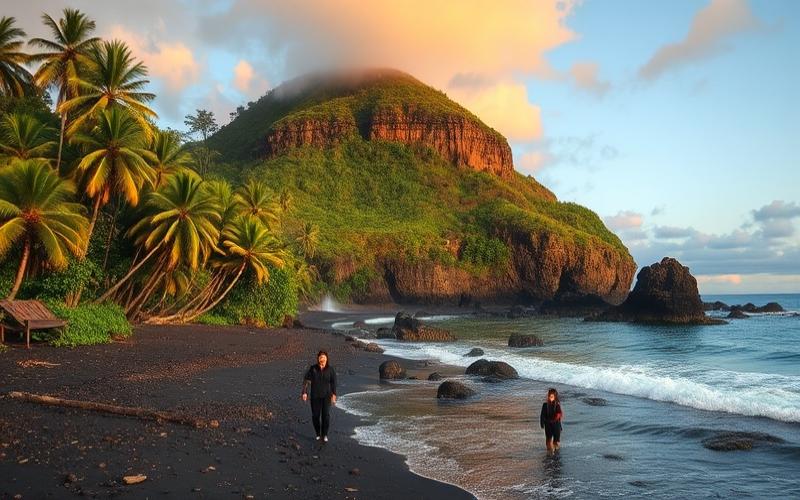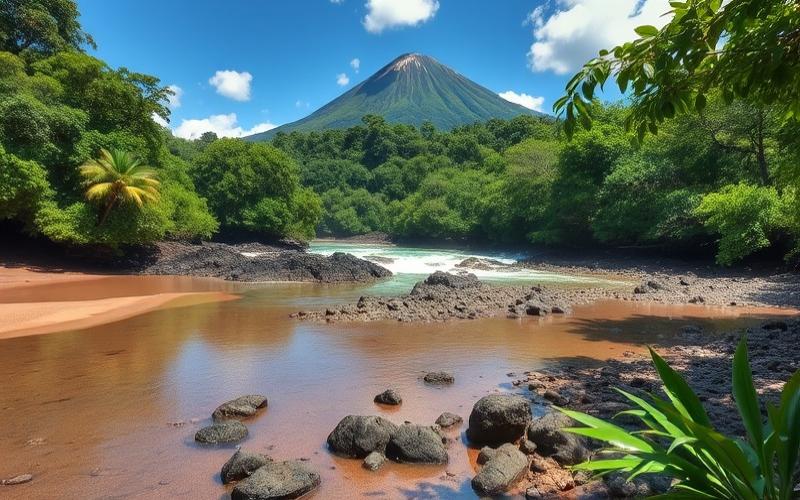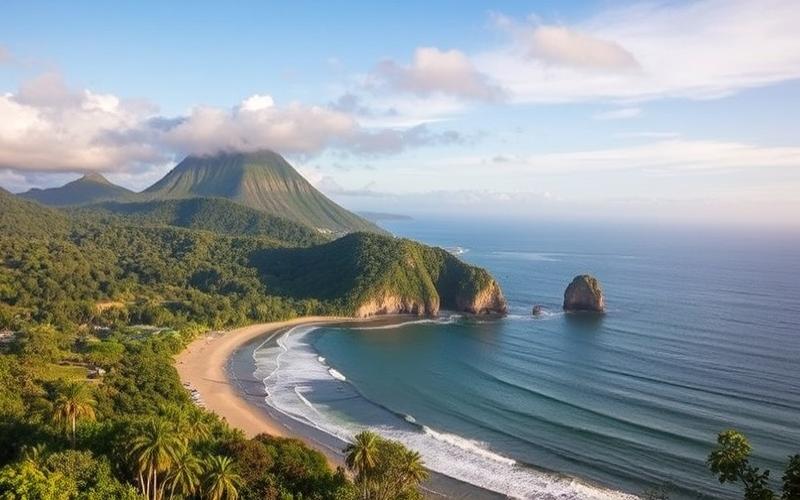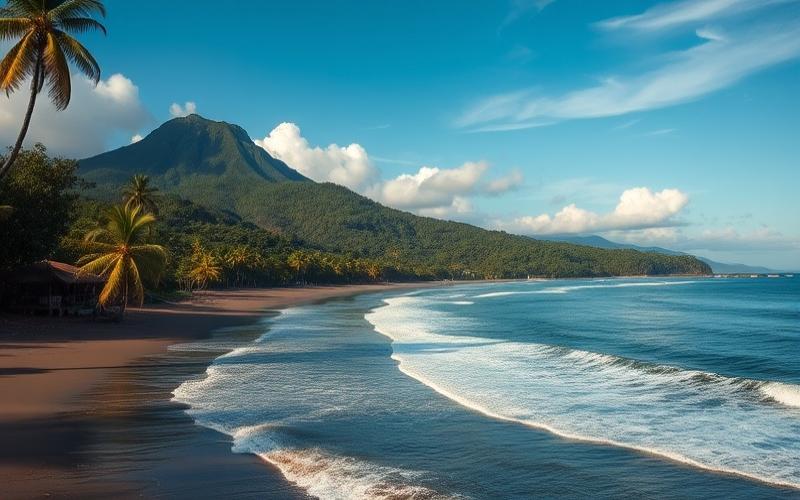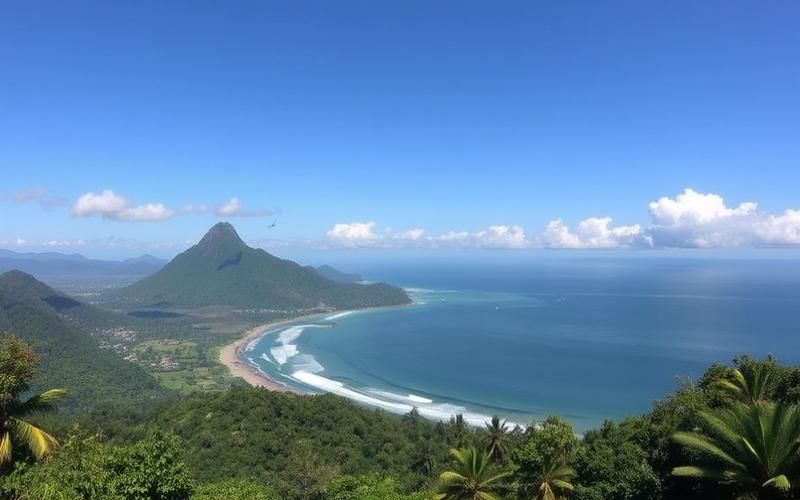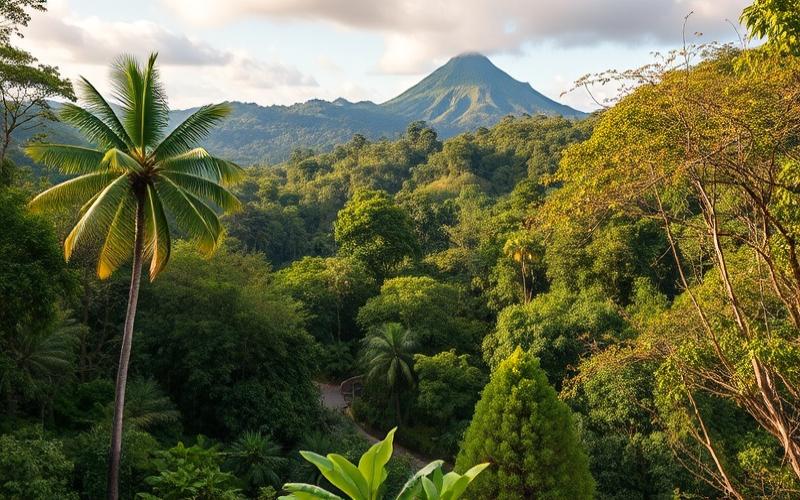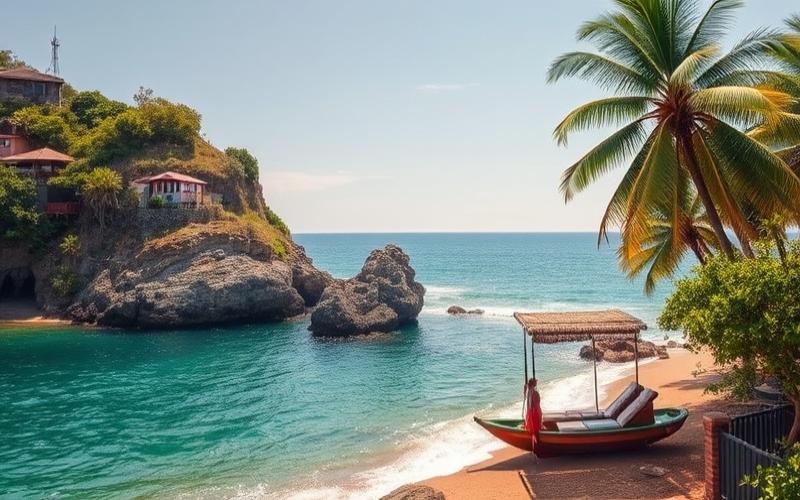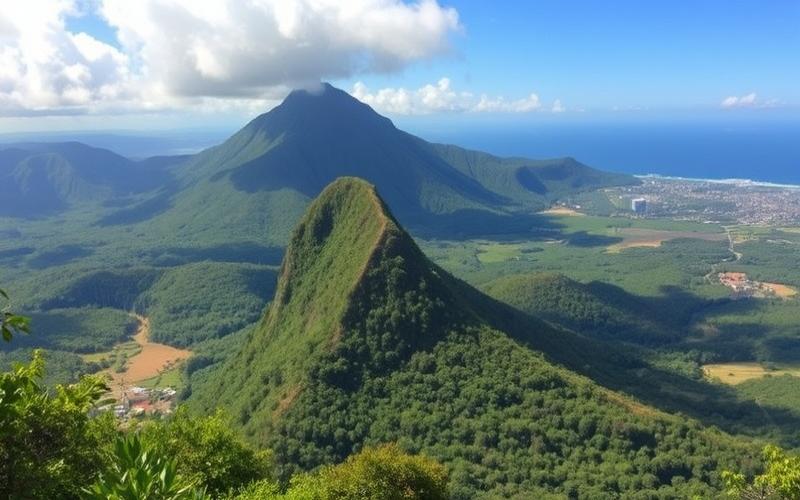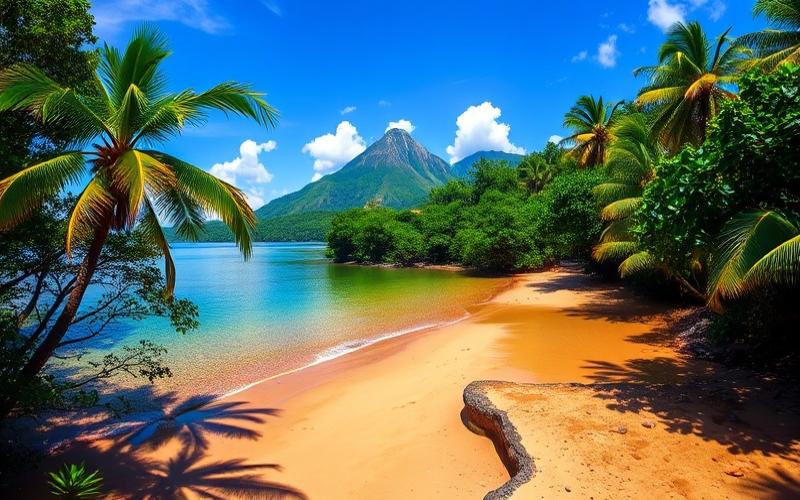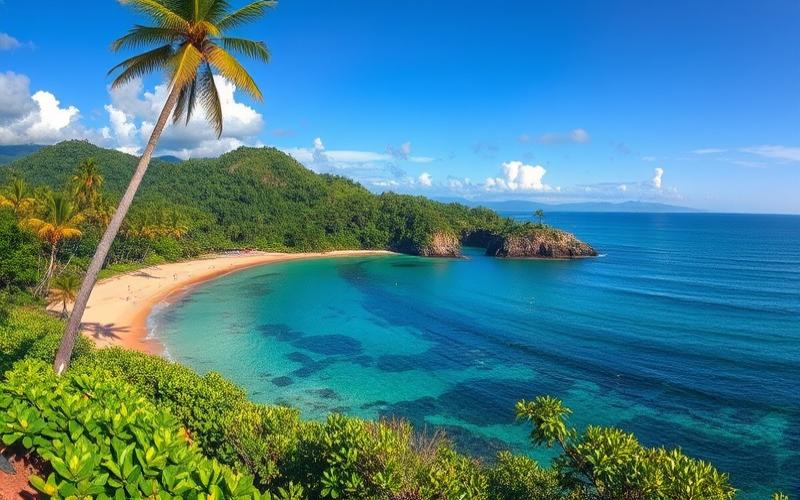
 Published on and written by Cyril Jarnias
Published on and written by Cyril Jarnias
The real estate market in Costa Rica is currently experiencing a fascinating dynamic, attracting both international investors and local residents eager to take advantage of this tropical paradise. With continuous growth, expanding infrastructure, and a renewed focus on environmental sustainability, the country has managed to stand out as a sought-after destination, particularly for luxury properties and vacation homes. Recent trends indicate an increase in eco-friendly projects and investment opportunities in less developed regions, highlighting the diverse and promising nature of this evolving sector.
Popular Sectors of Costa Rica’s Real Estate Market
High-Demand Regions and Cities in Costa Rica’s Real Estate Market
| Region / City | Popular Property Types | Indicative Prices (2025) | Popularity Factors |
|---|---|---|---|
| Central Valley (San José, Escazú, Santa Ana, Atenas) | Urban apartments, modern homes, offices | Homes from $250,000 USD | Economic hub, infrastructure, temperate climate, proximity to services |
| Guanacaste Province (Tamarindo, Nosara, Playa Flamingo, Conchal) | Luxury villas, beachfront condos, building lots, boutique hotels | Lots from $59,000 USD, villas from $250,000 USD | Renowned beaches, international tourism, Liberia airport, surfing, rapid development |
| Central Pacific Coast (Jacó, Manuel Antonio, Dominical, Ojochal, Uvita) | Ocean-view homes, condos, luxury villas, rental properties, lots | Homes starting at $295,000 USD | Preserved nature, eco-tourism, improved access, high rental demand, surfing |
Examples of attractive cities:
- Tamarindo: beach town vibe, high demand for vacation rentals, proximity to international airport.
- Jacó: nightlife, new condo projects, easy access from the capital.
- Manuel Antonio: exclusive villas, strong ecological and tourist appeal, high-end market.
- Nosara and Santa Teresa: surfing, wellness lifestyle, international clientele.
Sought-After Property Types
- Beachfront condos: ideal for seasonal rentals and investment.
- Luxury homes/villas: high demand in tourist areas and for expatriates.
- Building lots: particularly sought after in developing areas or with ocean views.
- Urban apartments: popular in the Central Valley for proximity to services and schools.
Factors Contributing to These Regions’ Popularity
- Tourist appeal: famous beaches, national parks, surfing, biodiversity.
- Developing infrastructure: international airports (Liberia, San José), new roads, modern urban services.
- Ecological and sustainable trends: eco-friendly construction, eco-community projects, appeal to environmentally conscious investors.
- Economic growth and political stability: legal security, favorable taxation, democratic stability.
- Rental yield: high demand for seasonal rentals, especially in beach and eco-tourism areas.
Recent Data on Prices and Growth
- Real estate market growth: +30% in international sales in 2024, upward trend confirmed in 2025.
- Land prices: from $59,000 USD in Guanacaste.
- Villa/home prices: from $250,000 USD (Guanacaste), $295,000 USD (central Pacific coast), from $250,000 USD (modern homes in San José suburbs).
- Rental yields: high in tourist areas and for luxury properties.
Costa Rica’s real estate market in 2025 is distinguished by strong demand in tourist, beach, and urban regions, driven by economic dynamism, booming infrastructure, and a marked orientation toward ecology and sustainability.
Good to know:
In Costa Rica, popular real estate sectors include the Central Valley, Guanacaste, and the central Pacific coast. The Central Valley attracts with its easy access to modern infrastructure, business opportunities, and family homes. Guanacaste, famous for its beaches and sunny climate, sees strong demand for beachfront condos and luxury villas, supported by growing tourist appeal and sustainable projects. The central Pacific coast, prized for water activities, offers building lots ideal for those seeking long-term investments in a preserved natural setting. Prices in these areas have shown significant increases with real estate growth rates reaching up to 7% annually, supported by new infrastructure development and increased attention from foreign investors.
Recent Price Fluctuations in the Costa Rican Market
Recent real estate price fluctuations in Costa Rica result from a combination of economic, political, and structural factors. Increased international demand, political stability, and monetary policies strongly influence the market. Trends differ by segment (residential, commercial, tourist) and location (coastal vs. inland areas).
Major Economic and Political Factors Influencing Prices:
- Growth in international demand (expatriates, remote workers, retirees, investors), particularly in tourist regions.
- Political stability and legal security, making the country attractive for long-term investments.
- Relatively stable interest rates, facilitating access to local real estate credit, though most non-resident purchases are made without credit.
- Moderate inflation and improved infrastructure (especially in coastal regions), supporting real estate appreciation.
- Tourism promotion policies and tax incentives for foreign investors.
Price Trends by Market Segment:
| Segment | Recent Price Evolution | Key Factors |
|---|---|---|
| Residential | 6 to 8% increase projected | International demand, stability, infrastructure improvement |
| Commercial | Moderate growth | Tourism recovery, urban development |
| Tourist | Strong increase in key areas | Tourist influx, seasonal rentals, overall attractiveness |
Average Prices by Geographic Location (2025):
| Region | Price/m² Apartments (CRC) | Annual Variation | Price/m² Houses (CRC) | Annual Variation |
|---|---|---|---|---|
| Guanacaste | 1,679,793 | +1% | 1,412,688 | +2% |
| San José | 1,026,926 | +1% | 817,927 | +1% |
| Puntarenas | 1,336,980 | -1% | 1,317,620 | +3% |
| Alajuela | 914,418 | stable | 802,141 | +1% |
- Coastal regions: Guanacaste, Puntarenas, Limón show the strongest increases, mainly for luxury, tourist, and beachfront residential properties.
- Inland regions: San José, Heredia, Alajuela show more moderate growth, with a more stable and less speculative market.
Price per Square Meter in Cities (2025):
- National average: €2,475.81 (approximately 1,332,488 CRC)
- Range: €1,554.85 to €4,579.08 depending on city and period
Statistics Illustrating Evolution (Average Price per m² in Cities)
| Year | Average Price €/m² |
|---|---|
| 2023 | 2,200 |
| 2024 | 2,350 |
| 2025 | 2,475.81 |
Impact of Government Policies and Interest Rates:
Policies favoring foreign investment (streamlined procedures, tax incentives) stimulate demand. Relatively low interest rates, combined with a stable local currency, strengthen investor confidence. CRC/EUR/USD exchange rate fluctuations influence price perception for international buyers.
Relationship with Local and International Demand:
Local demand remains stable, but the main dynamic comes from foreign buyers (Americans, Canadians, Europeans). Remote work and post-pandemic quality of life searches continue to support the market, especially in beach areas.
Price Evolution Forecasts (2025-2026):
6 to 8% increase projected for 2025, especially in coastal regions and sought-after tourist areas. Experts anticipate continued increases, but at a more moderate pace if global interest rates rise or international demand stabilizes. High-end and tourist segments should outperform, while the urban inland market will maintain more regular growth.
Good to know:
Recent real estate price fluctuations in Costa Rica are strongly influenced by economic and political factors, with notable price increases in sought-after coastal areas like Guanacaste, where international tourist demand remains high, while inland regions show more moderate variations. The residential market is experiencing a slight increase due mostly to government housing support policies, while the commercial segment is stable, despite uncertain tax policies. Relatively low interest rates encourage local investments, but political uncertainty can slow some international purchases. Recent statistics show that tourist property prices climbed 8% in 2023, according to a report from the Costa Rica National Association of Real Estate Agents, and experts predict continued short-term growth, especially in tourist hotspots.
Key takeaway:
The Costa Rican real estate market benefits from favorable conditions, driven by political stability, foreign capital influx, and sustained tourist demand. Coastal areas record the strongest increases, while inland regions show more contained growth. Forecasts remain optimistic for the coming months, subject to stability in global macroeconomic conditions.
Investment Opportunities: Which Property Type to Prioritize?
Costa Rica’s real estate market in 2025 is characterized by sustained growth, primarily fueled by the influx of international buyers, political stability, and the rise of remote work. Investment opportunities vary by property type, location, and demand dynamics.
General Market Trends
- Continuous price increases in most regions, especially in coastal and tourist areas (up to +8% in some coastal zones this year).
- Strong demand from expatriates, foreign investors, and digital nomads.
- Political stability and tourist appeal strengthen investor confidence.
- Infrastructure improvements (roads, airports, fiber optics) that energize certain regions.
Analysis by Property Type
| Property Type | Median Price (2025) | Demand | Inventory | Price Trend | Average Sale Time |
|---|---|---|---|---|---|
| Single-family homes | $642,238 | Strong (YTD decline) | +8.6% | -25.3% YTD | 359 days |
| Apartments/Condos | $432,209 | Moderate | +4.8% | -6.8% YTD | 357 days |
| Land | Variable | Increasing | Stable | +11% YTD (key areas) | Variable |
| Commercial/Offices | Variable | Selective | Stable | Stable | Variable |
| Luxury villas | >$1M | Strong (high-end) | Selective | +5 to 8% | Long |
Opportunities by Category
- Land: Strong potential, especially in developing regions or near major infrastructure projects. Land prices show the strongest growth, driven by speculation and tourist development.
- Residential properties (homes, condos): Prices have seen recent correction, offering buying opportunities, especially in regions where inventory has increased.
- Commercial properties: Selective opportunities, mainly in dynamic urban or tourist areas. Demand is linked to tourism recovery and expatriate population growth.
- Luxury villas: Stable and highly attractive market for international investors seeking rental yield and asset appreciation.
Booming Areas
- Guanacaste: Strong demand for beachfront properties, fueled by tourist development and new hotel projects.
- Caribbean Region: Increased accessibility due to new road infrastructure, still competitive prices, appreciation potential.
- San José, Santa Ana, Escazú: Sought-after urban hubs for rental or residential investment, proximity to services and market stability.
- Puntarenas and Jacó: Growing attractiveness for investors seeking vacation homes or seasonal rentals.
Factors Influencing Preferences
- Location: Proximity to ocean, nature, or urban centers remains decisive.
- Infrastructure: New roads, airports, fiber optic access, and health services enhance property value.
- Price evolution: Anticipation of new increases, especially in areas where demand exceeds supply.
- Quality of life: Security, preserved natural environment, and temperate climate attract foreign residents.
Risks and Precautions to Consider
- Risk of overvaluation in some tourist areas if demand reverses.
- Extended sale times, especially for high-end or poorly located properties.
- Fluctuations related to global economic conditions and tourism market.
- Importance of legal verification of property title (cadastre, absence of disputes).
- Sensitivity to infrastructure projects: invest in areas where projects are confirmed, not just announced.
Key Takeaways
Costa Rica offers a dynamic real estate market in 2025, driven by international demand, stability, and infrastructure improvements. The best opportunities currently lie in buildable land, luxury beachfront villas, and properties located in booming regions like Guanacaste, the Caribbean, or the San José periphery. Caution is advised regarding property selection, legal security, and analysis of each micro-market’s prospects.
Good to know:
Currently, the best real estate investment opportunities in Costa Rica focus on residential properties in coastal regions and developing areas, such as Guanacaste and the central Pacific coast, due to increased demand for vacation homes and seasonal rentals. Land is also sought after, especially near new infrastructure projects like roads and airports, which increase its value. Commercial properties, although risky due to economic fluctuations, offer good potential in tourist areas with growing visitor numbers. However, it’s crucial to consider investment risks related to local regulations and natural disasters. Investors should seek local legal advice to navigate real estate regulations and carefully assess price evolution to maximize their returns.
Disclaimer: The information provided on this website is for informational purposes only and does not constitute financial, legal, or professional advice. We encourage you to consult qualified experts before making any investment, real estate, or expatriation decisions. Although we strive to maintain up-to-date and accurate information, we do not guarantee the completeness, accuracy, or timeliness of the proposed content. As investment and expatriation involve risks, we disclaim any liability for potential losses or damages arising from the use of this site. Your use of this site confirms your acceptance of these terms and your understanding of the associated risks.



